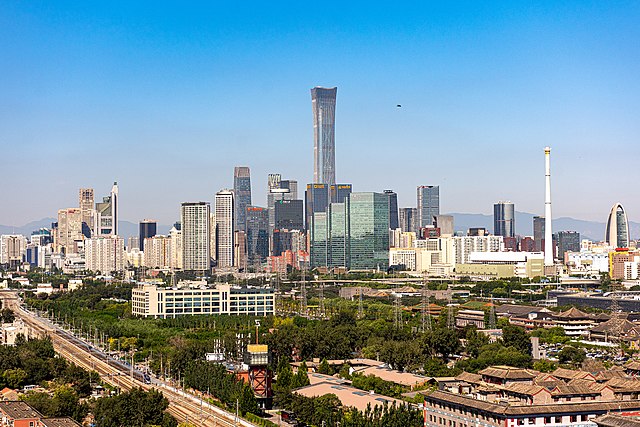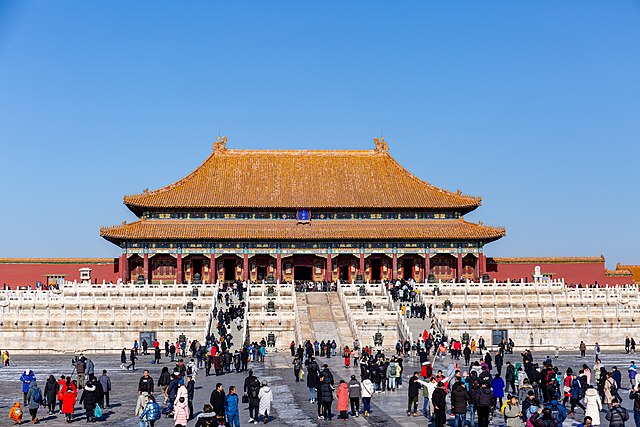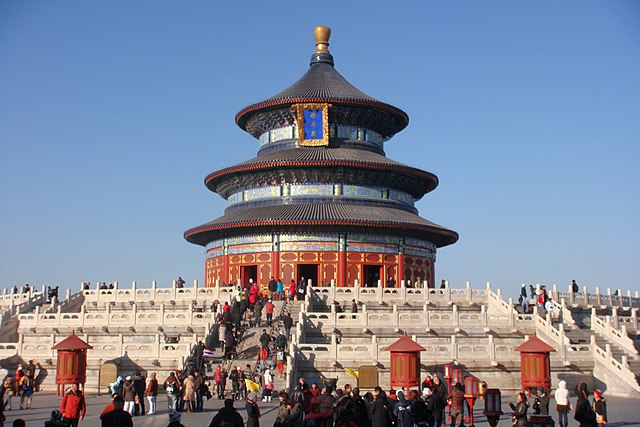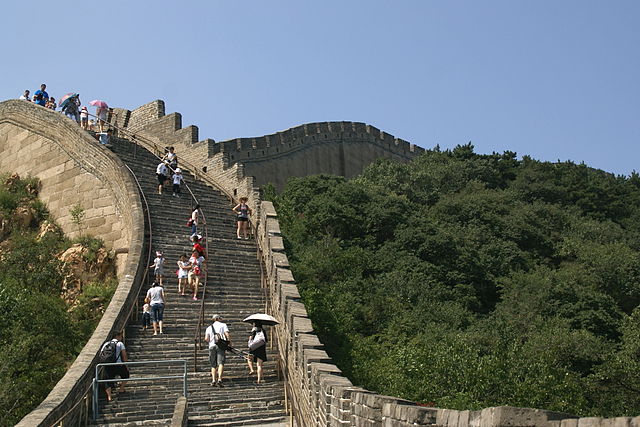The Battle of Peking, or historically the Relief of Peking, was the battle fought on 14–15 August 1900 in Beijing, in which the Eight-Nation Alliance relieved the siege of the Peking Legation Quarter during the Boxer Rebellion. From 20 June 1900, Boxers and Imperial Chinese Army troops had besieged foreign diplomats, citizens and soldiers within the legations of Austria-Hungary, Belgium, Britain, France, Italy, Germany, Japan, Netherlands, Russia, Spain and the United States.
The Allied Armies launch a general offensive on Peking Castle, by Torajirō Kasai (1900)
The route of the Eight-Nation Alliance force to relieve the Siege of the Legations in Peking, August 1900.
"I'll Try Sir," a U.S. Army in Action historical painting that depicts American soldiers from the 14th Infantry Regiment scaling the walls of Beijing. The Russians were halted by Chinese opposition in the burning gate portrayed on the right of the picture.
Beijing, alternatively romanized as Peking, is the capital of China. With more than 22 million residents, Beijing is the world's most populous national capital city as well as China's second largest city after Shanghai. It is located in Northern China, and is governed as a municipality under the direct administration of the State Council with 16 urban, suburban, and rural districts. Beijing is mostly surrounded by Hebei Province with the exception of neighboring Tianjin to the southeast; together, the three divisions form the Jingjinji megalopolis and the national capital region of China.
Image: Skyline of Beijing CBD from the southeast (20210907094201)
Image: 20200110 Hall of Supreme Harmony courtyard 1
Image: 11 Temple of Heaven
Image: 2014.08.19.110005 Great Wall Badaling







